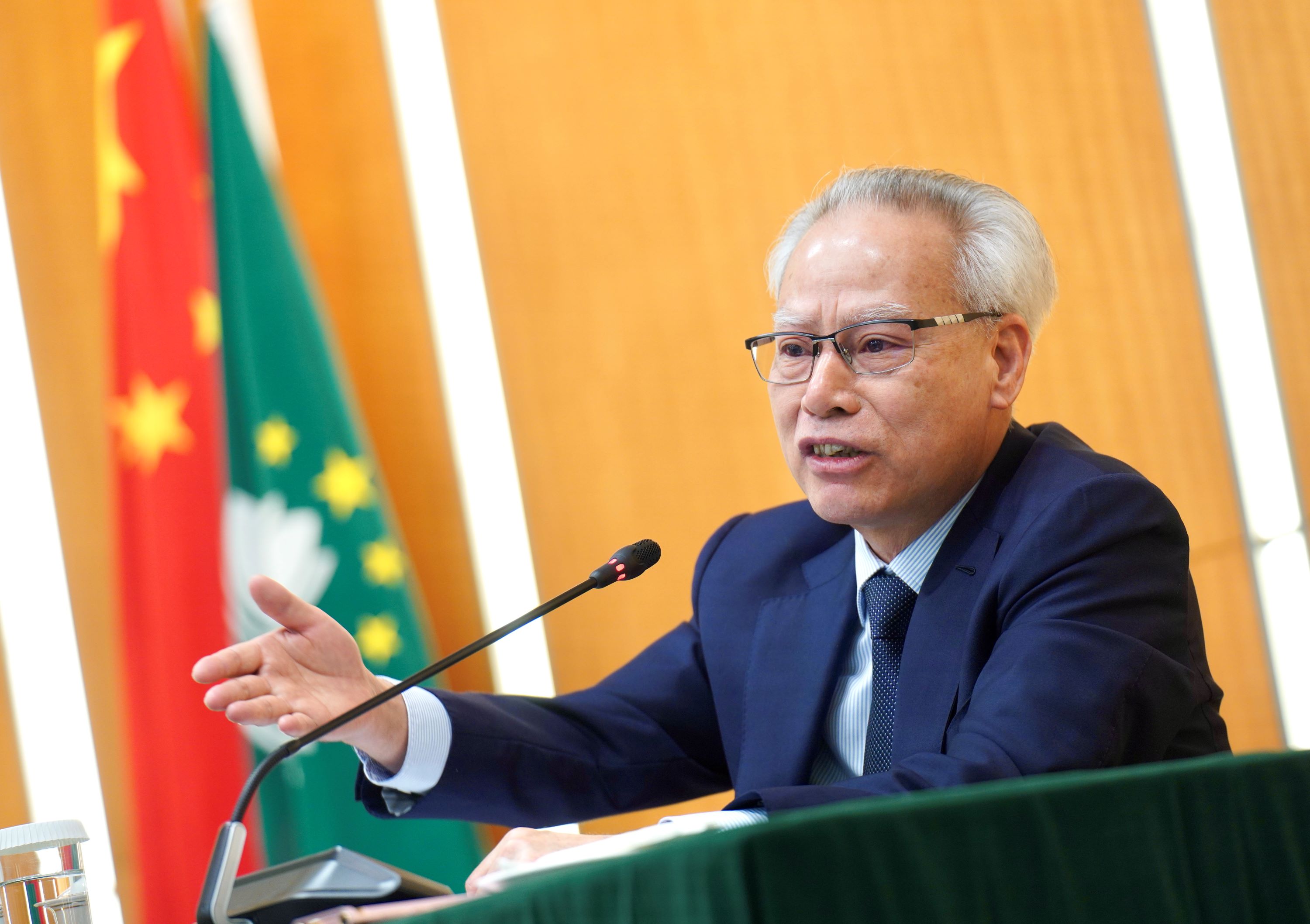
Macao will continue to accelerate development of the Hengqin cooperation zone to diversify its economy, promote scientific and technological talent development and boost links with other cities in the Guangdong-Hong Kong-Macao Greater Bay Area, the special administrative region’s top officials said on Sunday.
The remarks were made when the officials met with a group of some 100 journalists from across the country who are touring the Greater Bay Area to explore the economic progress and prospects of the 11-city cluster.
The journalists have planned a two-day visit to Macao to delve into the city’s economic vitality, tourism appeal and youth development initiatives.
During an hour-long interview with the reporters, Chief Executive Sam Hou-fai outlined Macao’s initiatives aimed at deepening industrial diversification, enhancing the SAR’s cultural and tourism appeal, bolstering scientific research and providing a broader stage for the younger generation.
The chief executive reiterated the significant role the Guangdong-Macao In-Depth Cooperation Zone in Hengqin plays in Macao’s economic diversification, noting the zone’s advancement will create extensive employment, living and growth opportunities for Macao residents.
Sam urged the local business community, especially younger people, to embrace the dividends of the Greater Bay Area and national development more proactively through Hengqin.
He stressed that one of Hengqin’s primary tasks is to continue capitalizing on the advantages of “one country, two systems” to facilitate institutional connections, while boosting investor confidence in Hengqin’s business environment and policy consistency.
READ MORE: Journalists explore Macao’s opportunities
After Sam’s interview, Secretary for Administration and Justice Cheong Weng-chon and Secretary for Social Affairs and Culture O Lam introduced Macao’s key policy initiatives to the visiting reporters.
In response to questions from China Daily, Cheong said Macao and other Greater Bay Area cities have taken concrete steps to enhance institutional links.
Cheong said Hengqin is positioned as a pivotal experimental field for the Greater Bay Area’s integrated development. With this in mind, the Macao SAR government has established specialized task forces to deepen links with Hengqin across various areas, such as legal frameworks, using “bold and innovative” approaches.
This year, the Macao and Hengqin authorities are planning to implement over 40 major measures to optimize institutional and mechanism links in areas such as people’s livelihoods, economy and trade, the legal system and management, revealed Cheong.
A task force led by Cheong’s department is also comprehensively reviewing Macao’s laws, aiming to promote legal amendments or new legislation to accelerate Hengqin’s development and remove legal barriers, said Cheong.
O Lam said that Macao actively responds to national requirements to nurture science and technology talent, and the under-construction international “university city” in Hengqin will underpin the city’s efforts to enhance scientific research transformation and talent cultivation in the future.
The 20-billion-pataca ($2.5 billion) project is one of four major infrastructure initiatives proposed by the SAR government to promote economic diversification and enhance international connectivity.
The other three projects are a world-class tourism, cultural and exhibition zone located between the Macao Peninsula and Taipa; the expansion of Macao International Airport; and a planned industrial park for science and technology research and development.
ALSO READ: Macao to integrate more closely with Hengqin’s development
O Lam said she envisages the ambitious “university city” as helping Macao’s globally recognized universities branch out to Hengqin, maintaining their teaching methods while strengthening education and research collaboration with top Chinese mainland and international higher education institutions.
In the afternoon, some members of the group visited the Macao Science Center.
Mok Ian-ian, president of the science center’s board of directors, said the center attracted over 710,000 visitors last year, a growth of 8 percent year-on-year.
Mok described the center, which has 14 exhibition halls, as a second classroom to promote science education, and the nation’s scientific achievements, among Macao’s youth.
For instance, the center has the International Laboratory for Science Popularization of BeiDou Navigation Satellite, the sole place in Macao that has been authorized to carry out experimental courses related to the homegrown navigation system. The center also features the Chinese Scientist Spirit Gallery, displaying sculptures of scientists who have contributed to the development of the country.
Other locations the journalists toured in the afternoon included the Giant Panda Pavilion, a popular tourist attraction housing four pandas — two gifted by the central government and two born locally.
The media tour attracted more than 100 journalists from nearly 30 media outlets from across the mainland, Hong Kong and Macao. The journalists set off from Shenzhen on Wednesday, and visited Hong Kong on Friday and Saturday.
The group will wrap up its Macao trip on Monday and proceed to Zhuhai — its final stop.
William Xu contributed to this story.
Contact the writers at amberwu@chinadailyhk.com


